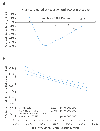New Concepts in Sudden Cardiac Arrest to Address an Intractable Epidemic: JACC State-of-the-Art Review
- PMID: 30621954
- PMCID: PMC6398445
- DOI: 10.1016/j.jacc.2018.09.083
New Concepts in Sudden Cardiac Arrest to Address an Intractable Epidemic: JACC State-of-the-Art Review
Abstract
Sudden cardiac arrest (SCA) is one of the largest causes of mortality globally, with an out-of-hospital survival below 10% despite intense research. This document outlines challenges in addressing the epidemic of SCA, along the framework of respond, understand and predict, and prevent. Response could be improved by technology-assisted orchestration of community responder systems, access to automated external defibrillators, and innovations to match resuscitation resources to victims in place and time. Efforts to understand and predict SCA may be enhanced by refining taxonomy along phenotypical and pathophysiological "axes of risk," extending beyond cardiovascular pathology to identify less heterogeneous cohorts, facilitated by open-data platforms and analytics including machine learning to integrate discoveries across disciplines. Prevention of SCA must integrate these concepts, recognizing that all members of society are stakeholders. Ultimately, solutions to the public health challenge of SCA will require greater awareness, societal debate and focused public policy.
Keywords: ECG; acute coronary syndrome; cardiopulmonary resuscitation; heart failure; informatics; machine learning; sudden cardiac arrest.
Copyright © 2019 American College of Cardiology Foundation. Published by Elsevier Inc. All rights reserved.
Figures






References
-
- Fox CS, Evans JC, Larson MG, Kannel WB, Levy D. Temporal trends in coronary heart disease mortality and sudden cardiac death from 1950 to 1999: the Framingham Heart Study. Circulation 2004;110:522–7. - PubMed
-
- Niemeijer MN, van den Berg ME, Leening MJ et al. Declining incidence of sudden cardiac death from 1990–2010 in a general middle-aged and elderly population: The Rotterdam Study. Heart Rhythm 2015;12:123–9. - PubMed
Publication types
MeSH terms
Grants and funding
LinkOut - more resources
Full Text Sources

